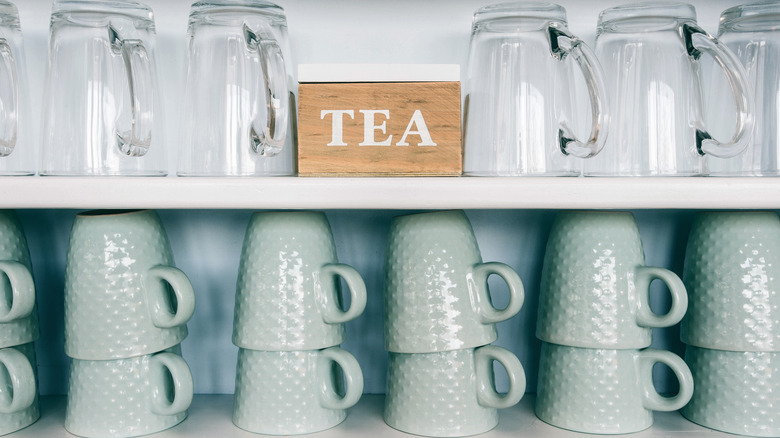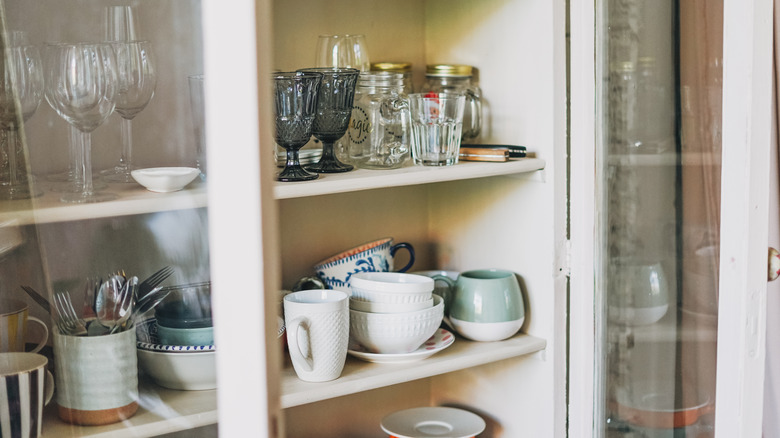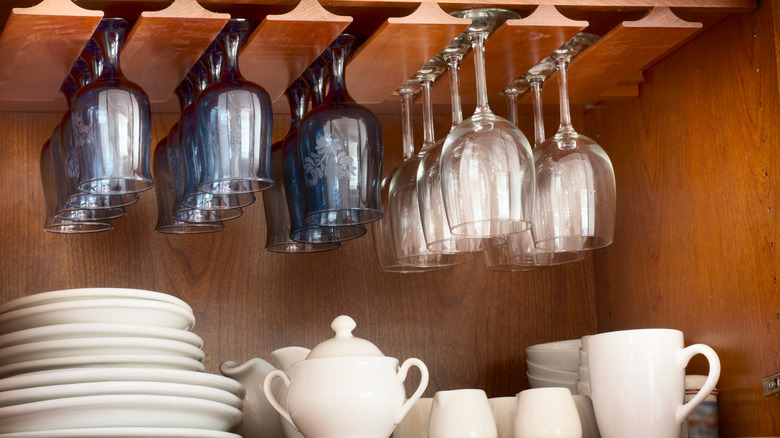The Definitive Right Way To Be Storing Your Glassware And Mugs
At one time or another, you have probably argued with a roommate or a significant other about the right way to do things. Which way does the toilet paper go, over or under? How warm should a room be, above or below 70 degrees Fahrenheit? Where is the produce stored in the fridge, side caddies, or drawers? These are probably habits you picked up from your parents or siblings, possibly based on the area you lived in. In a world where we encounter different people from different places every day, we are bound to be miffed by how other people's habits deviate from ours.
We all have preferences and quirks on how we put things, including how we store our glassware and mugs. Nothing is more jaw-dropping than when you have been doing something one way your whole life, and suddenly your roommate ensues chaos as they go against the grain. St. Norbert College outlines why communication is the key to successful relationships with those we live with, so let's settle this controversial debate and talk about the right way to store your glasses.
Upside down or right side up?
There are many details to consider when deciding how to place your glasses on the shelf, including health and safety. Esquire points out that the rim of your cup is the most common place for cracks and damage, especially in wine glasses and champagne flutes. Drinking out of broken glass poses several risks for injury, so one solution to protecting you and your glassware is to place them rim-side up in your cabinets. Only you know how clean your shelves are, be mindful of that when setting down the rim of a clean glass that you will drink from later. Another thing to consider when storing cups right side up is that you eliminate the possibility of trapped moisture. We are guilty of putting dishes away before they are completely dried, but trapped moisture eventually leads to bacteria.
Bacteria is a frequent argument for why you should also store your glasses upside down. Home Steady explains that the inverted method will help eliminate some of the dust that collects between uses, protecting the inside of the glass. Dust may seem minor, but you can become ill if you consume too much. According to the NHS, silica is caused by the consumption of silica dust. It may take a lot of dust over a longer period to develop illnesses like silica, but you should clean your glasses before using them, regardless of how they're stored.
Think beyond the direction of the glass
How you store your glassware is about more than if the rim is up or down. It would serve well to think about whether you are stacking, placing your mugs on hanging hooks, or allowing your stemmed glasses to dangle from a bar cart. These different storage techniques play a part in what kind of bacteria can accumulate and how much of it. If you opt to store stemmed glassware and mugs in a hanging manner, you eliminate the possibility of trapped moisture and broken rims but still leave it open to collect dust and have creepy crawling visitors. If you choose to stack your glasses, you are creating a perfect space for moisture to fester into bacteria, but the stacking method provides more space, and not all rims will touch a presumably dirty shelf.
Removing the need for stacking allows the inside of your glassware to breathe. The Inspired Home suggests installing a riser for smaller glasses if space in your cupboards is an issue. Clip-on coffee mug hangers are another space-efficient addition that will work for most cabinets. The definitive way to store glassware and mugs is different for everyone. Keep in mind how much space you have, how fragile your glasses are, and what bacteria you're worried about. What works in your home may differ from what works in another's, and whichever way you organize your cabinets, give the glass a good rinse before pouring refreshments.


